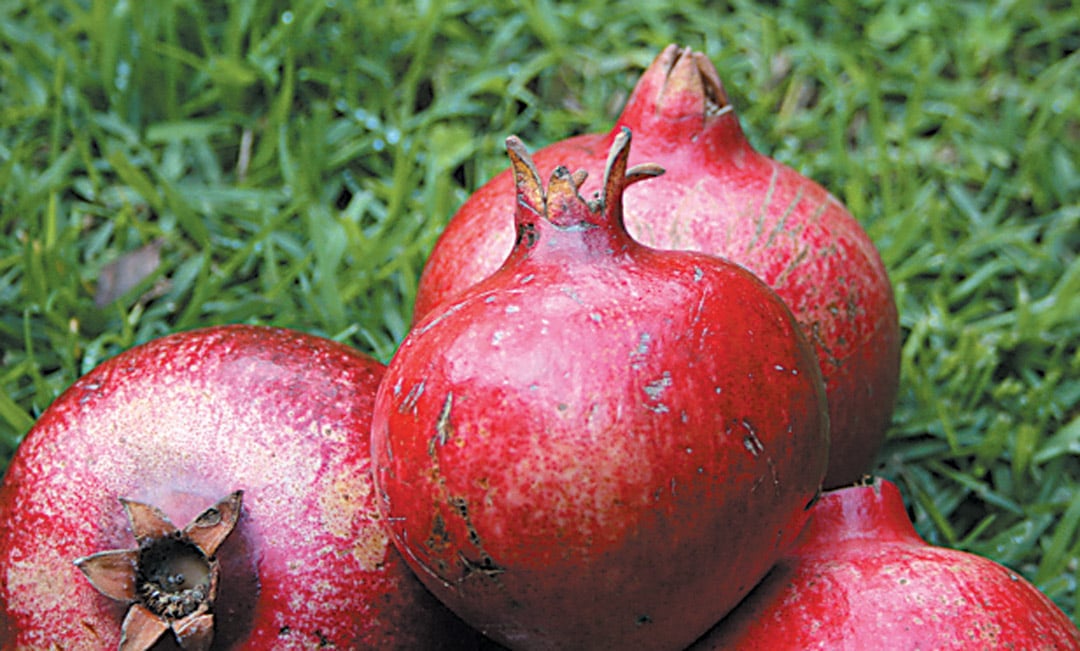

Contributor
- Topics: Archive

In Greek mythology, Demeter, goddess of the harvest, had a daughter called Persephone. The daughter’s loveliness caught the eye of lonely Pluto, god of the underworld. With Zeus’s permission, Pluto carried Persephone off to the land of mist and gloom. Demeter was saddened at the loss of her daughter and neglected her duties so that neither fruit nor grain grew for mankind. Zeus intervened on behalf of the starving people, but Demeter was adamant that, without her daughter, she did not care. Meanwhile, Persephone had fasted, mourning her fate, as she sat by Pluto’s side. Upon learning that Zeus wanted Persephone back with her mother, the sly Pluto, seeing how pleased and distracted the girl was, offered her a pomegranate to eat. Persephone spit most of the seeds out but accidentally swallowed a few. Once returned to her mother, she learned that the seeds she had consumed in the underworld condemned her to live there for an equivalent number of months per year. And thus the seasons came to be: spring and summer while Persephone was in Zeus’s world, and fall and winter whilst below with Pluto.
In its native Persia (Iran) and Afghanistan, the drought-tolerant pomegranate (Punica granatum) is not just popular, it is revered; it was believed that one seed in every fruit came from paradise itself. The name “pomegranate” means “many-seeded apple,” referring to the plethora of seeds found when the rind is split open—like rubies spilling from a leather satchel. A juicy aril covers the entire seed and glistens like a gemstone; popped in the mouth, each bursts upon the tongue with a distinctive flavor. Its plentiful seeds and ease of propagation resulted in the pomegranate’s association with abundance in both fertility and wealth.
With marketing like that, pomegranates spread to Carthage, Greece, Egypt, and other hubs of civilization. King Solomon, (tenth century BC king of Israel), used the calyx of the pomegranate as a model for a new style of crown. Solomon became known as a leader of great wisdom; soon, other kings emulated his headgear, giving rise to the typical royal crown that any preschooler today could draw. Pomegranates were important not just to royalty: the weary Israelites required reassurance from Moses that, yes, there would be pomegranates in the Promised Land, too.

The pomegranate reached eastern Asia by 470 AD, North America by 1577, and England by 1596. While the mythological importance may not have carried over, its medicinal properties ensured that fruit and tree were held in high esteem. Roots, bark, rind, juice, and seeds were all found to be useful, primarily in treating diarrhea and expelling intestinal parasites. By 1769, Spanish missionaries had spread their faith and their fruits north from Mexico to Mission San Diego Alcala, which became famous for its pomegranates and olives. From that mission, the fruit was incorporated into the planting of almost every other mission in California, though it actually thrives best in the southern, drier portions of the state. Pomegranates like it hot, require minimal water once established (deep water monthly in Southern California for the best fruit), prefer full sun, and tolerate poor, even alkaline soil. [Sunset zones 5-24]
The pomegranates at Rancho Los Cerritos (see Pacific Horticulture, Spring ’98) date back to the mid-1840s, when John Temple added this “exotic” fruit, as well as many other plants, to the colonial garden behind his two-story adobe. A deep well in the center of the garden supplied water that was drawn by a well sweep, stored in a cistern, and then carted by bucket to the individual plants. This labor-intensive effort paid off as the trees took root in what would become a garden showplace for the time. The trees were already established when California’s weather cycle became extreme in the early 1860s. First, rain and floods of biblical proportions deluged California; then, the region suffered an unparalleled two-year drought. Combined with high winds and hordes of grasshoppers, the multiple catastrophes took their toll on every garden, orchard, and agricultural enterprise. Temple had already retired and sold the property to Flint, Bixby, and Company for a sheep ranch. Jothum Bixby drilled a new well just outside the garden; a windmill provided the energy for lifting the precious resource into a raised water tower for storage. Gravity-fed canvas hoses conveyed the water to the planting beds for irrigation.

Despite the extreme weather conditions, the pomegranates and a few other plants prevailed and are mentioned in more then one account from the nineteenth-century Bixby period. Llewellyn Bixby Sr hired Ralph D Cornell in 1931 to create an estate garden around the old home, with a clear directive to preserve as many of the existing trees as possible (see Pacific Horticulture, October ’08). Cornell incorporated three well-established pomegranates into the new garden plan, one tree in the forecourt and two in the backyard. He provided wide, deep beds for those in the backyard, supported by perennials, shrubbery, and additional exotic fruits. The tree in the forecourt was coppiced to the ground to allow construction of a brick wall; it developed multiple leaders and soon cast a dappled shade again. Cornell also introduced the latest in irrigation technology: fixed sprinklers soon supplied water with the twist of a valve.

The pomegranates had passed the century mark when the Bixby family sold Rancho Los Cerritos to the City of Long Beach in the 1950s. The City added new plants and watering became more frequent. Pomegranates that had managed to survive several cycles of drought now saw water continuously—whether they needed it or not. In such heavy adobe soil (dense enough to form bricks to build a house), less water would have been appreciated. Their roots succumbed to disease and the heartwood decayed, resulting in a hollow, unstable base. One tree toppled over in the 1970s and, for whatever reason, the City staff allowed it to lie there undisturbed. While the rotted hollow base gaped forlorn, the trunk’s meristematic tissue remained viable; where the nodes touched ground, new roots formed and worked their way into the moist clay soil. A new root system became established and took on the responsibilities for the now reclining tree. The gnarled twisting branches and trunk arched upwards to greet the sun, creating a unique architectural masterpiece.
The second tree experienced decay as well. In a well-intentioned, though misguided attempt to keep it upright, the hollow center was filled with asphalt. A terrific storm a couple of years ago brought one trunk to the earth, where it, too, now lies undisturbed, softly resting upon the soil.
The tree in the forecourt, hard pressed by wall and paving and with less irrigation, shows no sign of decay. Having received less attention, it has fared better, an important lesson for all gardeners. All three trees, each over 160 years old, continue to offer four seasons of interest here in Long Beach, and provide a living history lesson in the water needs, tolerances, and adaptability of the pomegranate. Every garden is a laboratory for experiment. One of the gifts provided by historic gardens is their longevity, where results from the test of time are presented for your pleasure and edification.
Share:
Social Media
Garden Futurist Podcast
Most Popular
Videos
Topics
Related Posts

Ground Up Science for Greener Cities with Garden Futurist Dr. Alessandro Ossola
Spring 2023 Listen to the Podcast here. Alessandro Ossola is a scientist who gets very excited about the challenge of climate change allowing for an

Readying Urban Forests for Climate Realities with Garden Futurist Dr. Greg McPherson
Winter 2023 Listen to the Podcast here. “Going from the mow and blow to a more horticulturally knowledgeable approach to maintaining the landscape. And that

January Showers Bring February flowers…
Fall 2022 It may not quite have the same ring to it as the old English proverb, but it has a lot more truth to

Welcome, Greywater, to the Garden
Summer 2022 Oh, summer: delightful warm air, tomatoes swelling on the vine, fragrant blooms on an evening stroll. When it’s warm and rainless, how is








Responses